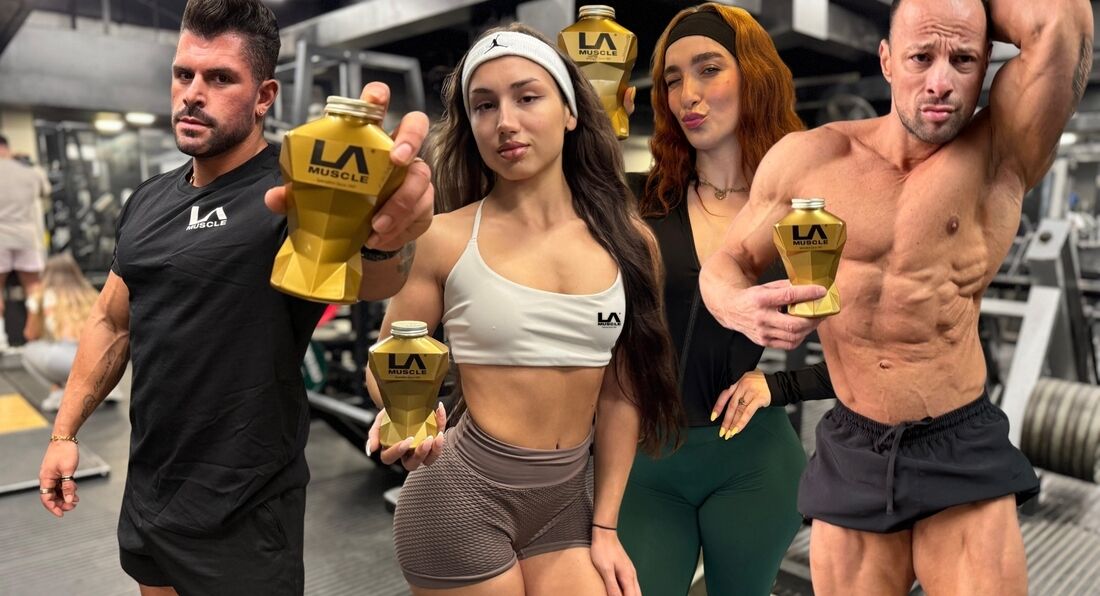Wednesday, 30th July 2025
Foods That Sound Healthy
But Are Sabotaging Your Gym Gains and Fat Loss
By LA Muscle on 30.07.2025 08:56 pm

When you’re committed to building muscle and shedding fat, your diet can either amplify your results—or quietly destroy them. Shockingly, some foods marketed as "healthy" or "gym-friendly" are anything but. While they might sound good on the surface, they often contain hidden sugars, poor-quality fats, or lack the nutrients needed to support real progress.
Here’s a breakdown of some surprisingly deceptive foods that could be sabotaging your fitness goals:
1. Granola and Granola Bars
Why they seem good: Often labelled "natural", "whole grain", or "organic".
Why they’re bad:
-
Usually high in calories, sugar, and refined carbs.
-
Often contains honey, dried fruit, and oils, making them calorie-dense and easy to overeat.
-
Lack protein and fibre to keep you full.
Better option: Homemade oats with protein powder, or a boiled egg with a piece of fruit.
2. Flavoured Greek Yoghurts
Why they seem good: Yoghurts are high in protein and probiotics, right?
Why they’re bad:
-
Flavoured varieties are often loaded with added sugars or fruit syrups.
-
Even “low-fat” versions are often worse, with sugar added to compensate for taste.
Better option: Plain, full-fat Greek yoghurt with fresh berries or a small amount of honey.
3. Store-Bought Smoothies and Juices
Why they seem good: Full of fruit, vitamins, and hydration.
Why they’re bad:
-
Contain massive amounts of sugar, often more than a can of cola.
-
Lack fibre and protein, so they spike blood sugar and leave you hungry.
-
“Green” or “detox” labels are often just clever marketing.
Better option: Make your own with spinach, cucumber, a scoop of whey, and almond milk.
4. Whole Wheat Bread and Wraps
Why they seem good: Better than white bread, right?
Why they’re bad:
-
Still processed carbs, which can cause hormone spikes and hinder fat burning.
-
Often includes added sugar, preservatives, and minimal fibre.
-
Wraps can pack more calories than two slices of bread.
Better option: Lettuce wraps, oatcakes, or sweet potato slices for sandwiches.
5. Dried Fruit
Why they seem good: It’s just fruit, right?
Why they’re bad:
-
Stripped of water and volume, dried fruit is calorie-dense and easy to overeat.
-
Often coated in sugar or oil to preserve taste and texture.
-
Lacks the fibre and volume of whole fruit, leading to hormone spikes and fat storage.
Better option: Stick with fresh, whole fruit like berries, apples, or bananas (in moderation).
6. Low-Fat or Fat-Free Foods
Why they seem good: Less fat = less fat on your body?
Why they’re bad:
-
Removing fat often means adding sugar, thickeners, or starches.
-
Fat is crucial for hormone production, especially testosterone—key for building muscle.
-
Low-fat diets can leave you feeling hungry and lead to muscle breakdown if you're training hard.
Better option: Choose healthy fats like avocados, nuts, seeds, eggs, and olive oil in moderation.
7. Veggie Chips and Baked Snacks
Why they seem good: They say “veggie”, “baked”, or “natural”.
Why they’re bad:
-
Often just potato or corn flour with vegetable flavouring or powder.
-
Still high in salt, carbs, and calories—just like regular crisps.
-
Won’t keep you full or help with recovery.
Better option: Real vegetables like carrot sticks, cucumber, or roasted chickpeas.
8. Acai Bowls
Why they seem good: Superfood-packed and full of antioxidants.
Why they’re bad:
-
Usually packed with fruit juices, honey, granola, and nut butters.
-
Can exceed 700–1000 calories in one bowl.
-
High in sugar, low in protein—not ideal post-workout or for fat loss.
Better option: A protein smoothie with unsweetened almond milk, berries, and whey isolate.
9. Almond Milk Lattes and Coffee Shop "Healthy" Drinks
Why they seem good: Plant-based milk and caffeine sounds like a win.
Why they’re bad:
-
Coffee shop almond milk often has added sugars and minimal nutrients.
-
Flavoured syrups, whipped toppings, and large sizes push calories through the roof.
-
Can sneak in 300–500 empty calories before you’ve eaten anything solid.
Better option: Black coffee, or home-made latte with unsweetened almond milk and cinnamon.
Just because something sounds healthy doesn’t mean it supports your goals. Marketing is powerful—but results are based on nutrient quality, macronutrient balance, and calorie control.
If you're serious about building muscle and burning fat, stick to:
-
Whole, minimally processed foods
-
High-protein meals
-
Good fats in moderation
-
Consistent hydration
-
And always, read the label—not the front, but the fine print




























